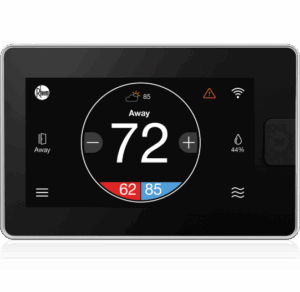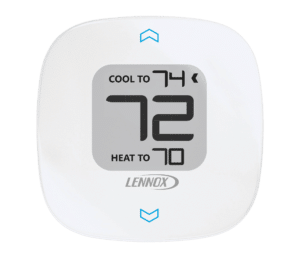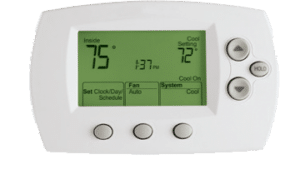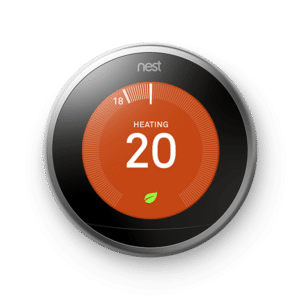Choosing the Right Thermostat for Your Home
A good thermostat is essential for controlling the temperature in your home and keeping energy costs in check. The right thermostat can improve comfort, reduce energy waste, and even extend the life of your furnace and air conditioner.
But with so many options available, which thermostat is best for your home heating and cooling system? Here’s a quick guide to the most common thermostat types — including their pros and cons — to help you make an informed choice.
Manual Thermostats
Manual thermostats are the most basic and affordable option. They work by allowing you to manually adjust your home’s temperature.
Pros:
-
Budget-friendly – Manual thermostats are typically the least expensive option.
-
Easy to use – Simple controls with no programming required.
Cons:
-
No automation – The temperature only changes when you adjust it manually.
-
Less efficient – May lead to higher energy use if you forget to turn it down.
Programmable Thermostats
Programmable thermostats allow you to schedule temperature changes throughout the day, which can help you save energy automatically.
Pros:
-
Cost-effective – Usually less expensive than smart thermostats.
-
Flexible scheduling – Program for weekdays, weekends, and vacations.
-
Energy savings – Automatically lowers energy use when you’re away or sleeping.
Cons:
-
System compatibility – Not all programmable thermostats work with every furnace or air conditioner.
-
Requires setup – You must program it to get the full benefit.
Smart Wi-Fi Thermostats
Smart thermostats take convenience to the next level by connecting to Wi-Fi and letting you control your home’s temperature from your smartphone, tablet, or computer.
Pros:
-
Energy-efficient – Learns your routines and adjusts automatically.
-
Remote control – Change settings from anywhere using your phone.
-
Helpful features – Get filter change reminders, weather tracking, and more.
-
Potential rebates – Some models may qualify for energy rebates.
-
Modern design – Sleek and stylish for today’s smart homes.
Cons:
-
Higher upfront cost – More expensive than manual or programmable options.
-
Compatibility required – Not all HVAC systems support every model.
-
Tech-savvy needed – Best for homeowners comfortable with apps and technology.
Communicating Wi-Fi Thermostats

Pros:
-
Peak efficiency – Helps your furnace and air conditioner operate at optimal performance.
-
Smart control – Offers scheduling and remote access like other smart thermostats.
-
Energy savings – Designed to minimize energy use while keeping you comfortable.
Cons:
-
Premium price – Typically the most expensive thermostat type.
-
Equipment dependent – Requires compatible communicating HVAC systems.
Need Help Choosing?
If you’re unsure which thermostat is right for your home, or if you’re thinking about upgrading your furnace or air conditioner, Call on Reliance™ to book an appointment with one of our trusted Home Comfort Advisors. We’ll assess your system, recommend compatible thermostat options, and help you choose a solution that fits your needs and budget.
Want to learn more? Explore our Ultimate Furnace Guide for tips on maintaining and upgrading your heating system.










